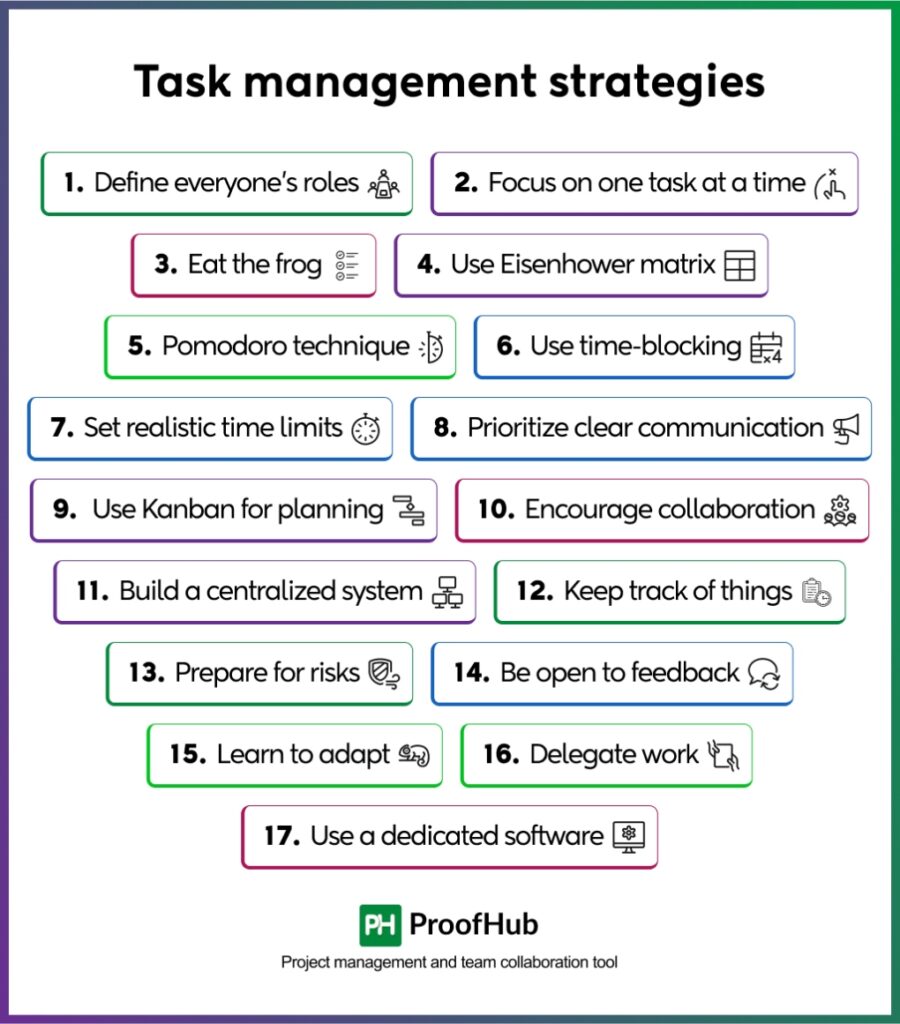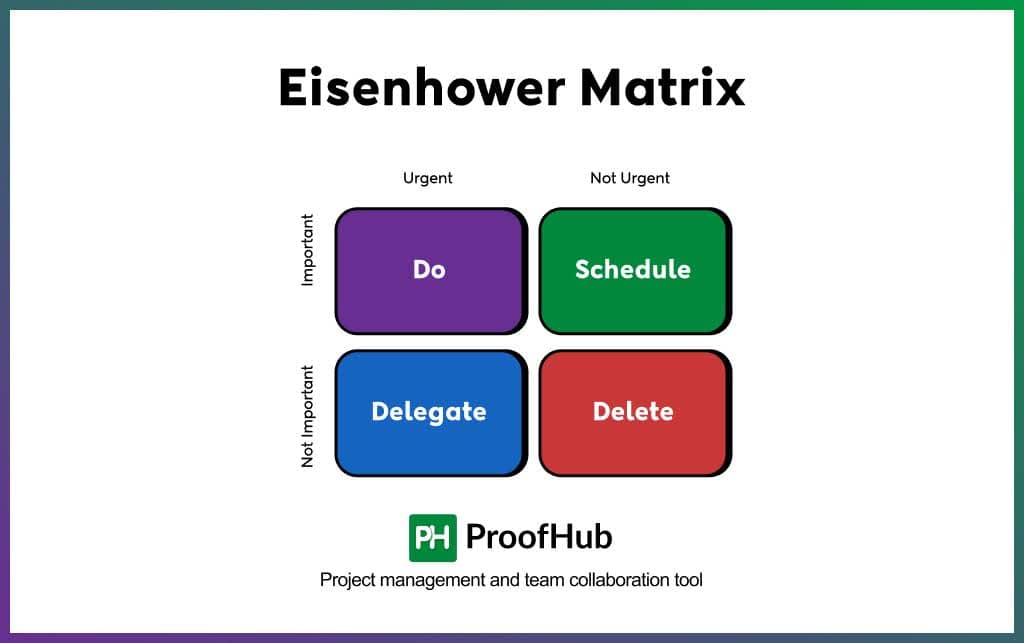Every project manager – experienced, new to the role, or maybe somewhere in between- has had those moments.
Shifting priorities. Compromised deadlines. Teams are stretching themselves too thin, yet there is no tangible progress to show at the end of the day.
Let me be honest: It happens. No big deal.
But normalizing being stuck in this reactive loop forever? That’s one of the worst things you can do to yourself and your team. Compromised morale, unclear decision-making, derailed overall performance – all quietly masking the chaos behind the illusion of being busy.
It’s a pattern I’ve watched unfold too often, not because teams aren’t incapable of constantly putting out fires without the right systems.
That’s where effective task management strategies come in. Consider them not a corrective action, but a classic upgrade to your leadership toolkit. One that helps you focus less on chasing tasks and micromanaging chaos, and more on leading your team towards meaningful excellence.
Whether you’re stepping into leadership for the first time or steering a complex, scaled-up organization, these strategies for managing your team and their tasks aren’t just nice to have – they are necessary. And getting this right is non-negotiable in achieving utmost efficiency, especially when the pressure is at its peak.
In this article, I am sharing 17 powerful task management strategies that have helped me cut through the noise, reduce overload, and drive results without falling off.

1. Define everyone’s roles
The first step to implementing effective task management practices is clearly defining team members’ roles and responsibilities in the project.
When your team knows their role in the bigger picture, what is expected of them, and how their work contributes to the overall project progress, there is more dedicated execution and less confusion or overlap.
This clarity helps team members stay focused, avoid duplicated efforts, and align their efforts in one direction to achieve shared goals. It also builds a stronger sense of accountability and ownership, so everyone knows what success looks like on their part.
2. Focus on one task at a time
Multitasking is the fake illusion of productivity. While it comes naturally to some, it often creates mental clutter, fragmented focus, and inconsistent output.
In my experience, glorifying speed over intentionality puts you in a questionable position, where you cannot justify the outcomes. The pursuit of doing everything faster ended up being a half-baked result, not standing up to the mark.
Instead of doing everything at once, consider breaking big tasks into smaller subtasks, so that your team can focus better and complete them one by one. This kind of discipline promotes precision and clarity in the final output.
3. Eat the frog
Being in this position for a long time, I’ve seen people avoiding the difficult task or saving it altogether for last. They think this will make it easier later.
But the truth is, the longer it lingers, the heavier it feels, and the more energy it drains. You constantly dread the unfinished work, which reflects in your mental bandwidth, even when not working actively.
And that is why I recommend “eating the frog”, i.e., prioritizing the hardest, most high-impact task. Not because it’s urgent, but because it clears the mental roadblock for the rest of the day.
4. Use Eisenhower matrix
The Eisenhower matrix is a powerful task management strategy to prioritize wisely. A mountain of tasks in front of you allows you to look beyond ‘the urgency trap.’
The framework allows you to distinguish between the tasks needing your attention and those that must be deleted or delegated to others. It helps you categorize tasks into four categories:
- Urgent, important: Highly significant and requires immediate attention. Prioritize it.
- Important, not urgent: Significant in the long term but not time-sensitive. Schedule it.
- Urgent, not important: Urgent now, but not necessarily important later. Delegate it.
- Not important, not urgent: Low priority and limited impact. Eliminate it.

5. Pomodoro technique
The Pomodoro technique is another effective task management strategy to manage your time across tasks for better productivity.
Named after the Italian word, the method encourages 25 minutes of dedicated work sprints, followed by a 5-minute break where you can just go stretch, fetch a coffee, or just breathe.
The technique works wonders in high-pressure environments, allowing you to get more done without feeling overwhelmed. You can encourage your team for these focused bursts, not just to do more but to do it better in less time.
6. Use time-blocking
I swear by this method. If something is not blocked on my calendar, it does not get done. Period.
By reserving time for specific tasks, you can ensure you get time to strategize, execute, and even rest. It may look rigid on the surface, but trust me—it is the most liberating habit you can build.
And for the ones in the leading position, I believe, it is way more crucial to get their schedule sorted. Also, you can inspire your team to follow suit, so that the whole organization operates in sync.
7. Set realistic time limits
Setting realistic time frames for each task is one critical task management practice. But often, we end up committing to and defining unachievable timelines that weigh heavily on the team’s morale.
This miscalculation not only adds undue pressure and stress on your team but also makes them struggle to achieve a target that was never feasible.
As a project manager, you should be thoughtful when defining milestones and deadlines. Ensure that the expectations are grounded so that teams take it as a direction, not as a rigid deadline, but as a space for focused work.
8. Prioritize clear communication
According to BYB’s Harris Survey, 86% of professionals blame a lack of effective communication as the source of workplace failures like poor productivity, turnover, and conflict.
This number reflects the importance of team communication for businesses and justifies why it is one of the most critical task management strategies.
To achieve this level of alignment, establish clear communication channels, use virtual communication tools, and prioritize intentional, structured, and free-flowing communication. Make it a default nature of your work culture so that everyone feels safe, heard, and understood.
9. Use Kanban for planning
A Kanban board is a visual task management system that helps you plan, organize, and track your work in the simplest yet most innovative way possible. It visually represents your project and your team’s overall progress.
Using Kanban for task management is one of the most effective ways to sort work-related tasks/activities. It provides you with a comprehensive overview of your entire workflow, outlining “What is in progress?”, “What is done?”, “What is coming up next?”, “What is falling behind?”, and so on.
From tracking progress to spotting bottlenecks and identifying delays, Kanban helps keep everyone aligned and optimize your task management workflow.
Read More: What is Kanban? Methods, types, & benefits
10. Encourage collaboration
The best task management is not possible in solo systems. It is a team effort, making the presence of effective collaboration even more crucial, especially in remote or hybrid teams, where face-to-face interaction is limited.
However, too often leaders mistake collaboration to be once in a while touchpoint or a status update meeting. On the contrary, it is an ongoing process that inspires trust, innovation, and problem-solving.
Some practical ways you can ensure seamless collaboration in your workspace are:
- Talking to your team regularly
- Encouraging two-way feedback
- Using collaboration and communication tools
- Assigning responsibilities clearly
11. Build a centralized system
Task management isn’t just about assignees, deadlines, and checklists – it is also a lot of documents, files, conversations, and much more.
And being someone who deals with multiple moving parts, I can’t emphasize enough the importance of organization. When you lose minutes, or worse, hours hunting files, a comment in an email, or chasing down multiple versions, you lose momentum — all that could have been avoided with a centralized system.
On the contrary, when everyone knows where to find what they need without pinging five people for it or digging through several folders, your team moves faster — and gets things executed on time.
Discover the 11 best document management software for centralized storage
12. Keep track of things
From a leadership standpoint, you cannot just let things be.
Regardless of how thoughtful your project plan is, how aligned your team feels, and how efficient your system looks, you should always track how things progress. This proactive mindset allows you to:
- Identify what’s working
- Address blockers quickly
- Course-correct when needed
To keep things on the right track, you can use comprehensive project management and team collaboration tools like ProofHub with real-time reporting to find irregularities, blockers, and inconsistencies early on.
13. Prepare for risks
You created a well-thought-out plan, gave enough time to draft it, and rallied the team behind it. But does it ensure success?
Well, I have seen many ambitious plans crumble to the ground. Not because they lacked the “flawlessness” but because they didn’t account for what could go wrong.
Planning for risks is a non-negotiable practice that saves you grace when things spiral out of control. Take it as my learning curve and make sure to anticipate risks upfront. Build buffers. Identify failure points. Talk openly with teams about what could derail progress.
Explore our comprehensive list of risk management software to protect your business against vulnerabilities
14. Be open to feedback
This practice is the silent enabler that often isn’t considered a formal strategy, but has the most significant impact on team performance. And it works wonders when it goes both ways.
Providing feedback creates a space for self-awareness, clarity, and alignment. And when your team can even reach out to you, challenge processes, raise red flags, and offer suggestions, you get a 360-degree understanding of the system.
Also, feedback should be an ongoing process, unlike during quarterly or yearly reviews. Doing this, you build a culture that drives continuous improvement and the best possible results.
Read more: Real-time feedback: key to team excellence for managers
15. Learn to adapt
While it is better to stick to a plan, leave a scope for the right amount of flexibility.
Giving yourself the freedom to reflect, rethink, and respond rather than react. Whether it is reprioritizing your priorities, shifting focus, or redefining timelines, be open to every possibility.
Rigidity is stagnation. Adaptability is growth. And when your team reflects the same mindset, your success multiplies.
16. Delegate work
Delegation is a mindful task. But sadly, I have seen many managers, especially new ones, stuck in the vicious “Doing everything on their own” cycle, while others mistake it for offloading their work. Both ways it is counterproductive.
Effective delegation starts with trust. Being mindful of what needs your attention and what you can trust others with, so that ownership is achieved effectively for continuous progress.
17. Use a dedicated software
You can’t rely on sticky notes, spreadsheets, and mental checklists to streamline work. You need technology that brings structure, visibility, and alignment to your entire task management process.
By using a centralized task management platform like ProofHub, you can not only organize your work, deadlines, and documents in one place but also align focus, streamline communication, and get real-time clarity on what matters most.
Apart from this, your chosen solution should never fall short in the face of your growth. It must scale as your work, workflow, and team become complex.
What are the common task management mistakes?
Even with the best-laid plans and strategies, your task management efforts can slow down or face serious setbacks due to common mistakes.
Here are some costly pitfalls to avoid:
- Micromanagement: Not trusting your team with their responsibilities and constantly hovering over their shoulder for updates significantly affects their morale and ownership.
- Vague task assignment: Assigning team tasks without clarifying their intent, scope, and expectations leaves them astray.
- Overloading your team: Not considering your team’s workload and capacity when delegating tasks is a common oversight with significant implications.
- Planning with no buffers: Allocating not enough time for uncertainties can cause delays in the case of unexpected events.
- Setting unrealistic deadlines: Forcing unreasonable timelines and testing the limits of your team’s capacity leads to rushed work and compromised work quality.
- Ignoring blockers: Not staying in sync with the task’s progress or eliminating potential discrepancies early on can weigh heavily on your timelines and team efficiency.
What are the key components of effective task management?
The fundamental components of an effective task management system include:
- Clear goals and objectives: Start by defining clear and realistic objectives you aim to achieve from the task. Make sure it aligns with the overall project objectives.
- Prioritization: Task management is a lot of work. But defining what deserves your attention the most is a critical tactic that makes all the difference.
- Scheduling: Ensure effective task scheduling by defining clear, realistic start and end dates. It gives teams the clarity and structure needed to stay on track.
- Communication and collaboration: Prioritize open and transparent communication by clearly defining responsibilities, encouraging regular updates, and promoting seamless collaboration.
- Progress tracking: Regularly monitor the task progress to identify what is completed, what is in progress, and any bottlenecks keeping things from progressing or getting completed.
- Flexibility: Be prepared to adapt when the plans and tasks shift. Being agile helps you stay focused on outcomes rather than blindly following outdated plans.
Conclusion
Task management is a broad concept. It is a science of getting things done – smartly, intentionally, and strategically.
And to ensure it works effectively, you need the right task management strategies – like prioritizing purposefully, communicating extensively with your team, using the right tools, and keeping track of progress – you transform busy teams into high-performing ones.
It eliminates inefficiencies, guesswork, and stress and brings clarity, accountability, and a stronger sense of direction to your team’s workflow, transforming them into high-performing ones.

